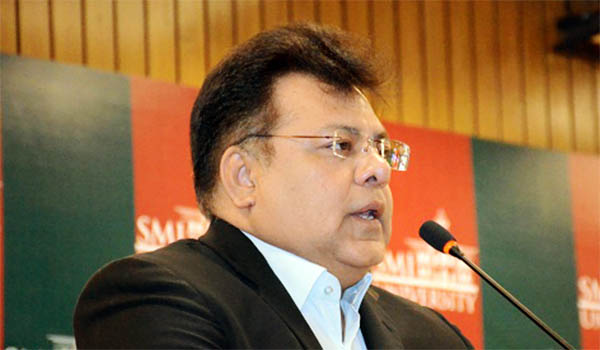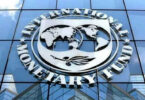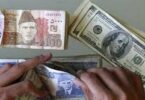F.P. Report
ISLAMABAD: The Federation of Pakistan Chambers of Commerce and Industry (FPCCI) Presidential candidate for the upcoming polls of 2024 Muhammad Ali Sheikh has called for taking corrective measures as rapid escalation in debt is widely seen as unsustainable, yet serious steps are now vital to curb this alarming trajectory, by keeping check on government expenditure and high cost of debt servicing, as the federal government debt has surged to a staggering Rs64 trillion.
Quoting the State Bank of Pakistan report, the FPCCI Presidential candidate nominated by the BMP, said that the federal government’s debt has soared by Rs14.5 trillion, constituting a substantial 29.2% rise compared to the same period last year. He said that the debt burden is gradually increasing because of insufficient tax revenue collection that forced the government to borrow from the domestic and external resources to finance the soaring fiscal deficit.
In its monthly report on Foreign Economic Assistance (FEA), the Economic Affairs Division (EAD) said against its annual target of $17.6bn, total FEA in the July-September quarter amounted to $3.527bn when compared to just $2.234bn of the same period last year, an increase of 58pc. Total inflows recorded by the EAD in September came in at $321 million against $316m in August.
Major FEA during the first quarter flowed in at $2.89bn in July soon after Pakistan reached an agreement with the International Monetary Fund (IMF) for a fresh short-term program.
This FEA is in addition to $1.2bn released by the IMF on July 13 as the first tranche of the $3bn Stand-By Arrangement (SBA) and $1bn by the United Arab Emirates that are separately accounted for by the State Bank of Pakistan (SBP).
The bulk of foreign loans reported by the EAD came from Saudi Arabia as a time deposit followed by a $508m guaranteed loan to Pakistan Air Force (PAF) by China National Aero-Technology Import & Export Corporation (CATIC). Of the remaining inflows included $490.48m from multilateral agencies and $324m from bilateral lenders.
Another $204.5m flowed in from overseas Pakistanis in Naya Pakistan Certificates (NPCs).
The government has estimated about $17.62bn in foreign assistance in the budget for the current fiscal year, including $17.385bn in loans and the remaining $235m in grants. As such, total loan disbursements in the first three months stood at $3.49bn and $34m in grants.
Mainly because of this, the country’s total external public debt slightly declined to $85.2bn as of March 31 from $86.56bn as of Dec 31, 2022, according to the EAD’s quarterly report for the third quarter of last fiscal year ending March 31.
Out of the total external public debt of $85.18bn, the government owed $64bn to multilateral and bilateral development partners including IMF which meant more than two-thirds (i.e. 75pc) of the total external public debt was on concessional terms with a longer maturity, 16pc (i.e. $13.5bn) from international capital markets and foreign commercial banks, and 7pc (i.e. $7bn) of the total external public debt constitutes deposits from friendly countries like China and Saudi Arabia.
Muhammad Ali Sheikh said that this unsettling trend has raised concerns about fiscal sustainability and the adverse impacts of steep currency devaluation come at a time when the World Bank has cautioned Pakistan about the growing risks of its macroeconomic framework.
For the past one and half year, the country is facing a serious financial crunch and continually relying on borrowing to meet its financial needs.
The growing debt stock carries significant fiscal costs and exposes the country to debt vulnerabilities, as highlighted in the Pakistan Development Update report by the World Bank. He also emphasised that persistent fiscal deficits and debt repayments have resulted in consistently high annual gross financing needs, averaging 27% of GDP over the past decade. This level is notably higher than the emerging market threshold of 15%.
The leader of the BMP said that in the past two decades, Pakistan has witnessed two consecutive years of the highest budget deficits in 2022 and 2023. The World Bank pointed out that for the current fiscal year, a budget deficit of 7.7% of the GDP is anticipated, a staggering Rs1.3 trillion above the government’s target.
The World Bank expressed concerns over these persistent large budget shortfalls, which have led to the rapid accumulation of public debt. This, in turn, has crowded out private investment and contributed to macroeconomic volatility.
The SBP data unveiled an alarming 39% increase in the external debt of the federal government, reaching Rs24.2 trillion within a year. A substantial Rs6.7 trillion increase in external debt was primarily attributed to currency depreciation. As of August 2022, external debt stood at Rs17.4 trillion, excluding the International Monetary Fund (IMF)’s liabilities.







